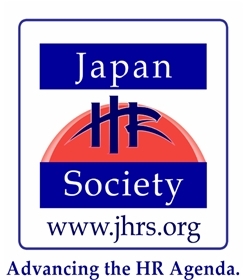Younger Boss, Older Subordinate
ToshiShita no JoShi・ToshiUe no BuKa
年下の上司・年上の部下
Annette Karseras
When the issue of Younger boss, Older subordinate came up yet again at the Marcus Evans HR Japan Summit 2017, it became clear that it was time to share stories and strategies and to scope out the way these issues interplay with others in Japan-based workplaces.
Irrespective of which one of the world’s aging workforces you are in, generational issues are likely to get bigger before they get resolved. At the Marcus Evans HR Japan Summit 2017, panellists agreed resoundingly with Shigeki Egami, Chief Human Resources Officer at Sato Holdings, that communication between older employees and younger bosses was a major workplace issue. Communicating up the chain of command but downwards in age, and vice versa, can complicate core business concerns such as how to increase productivity or facilitate knowledge transfer.
However, it is not just employee age that’s at issue here. The relative youth or maturity of industries, and the higher or lower power distance of national cultures, can also minimize or magnify perceived age gaps. To illustrate, let me share two contrasting tales. One, a snapshot of a younger manager, from low power distance Denmark working in the younger IT industry as he arrives in Japan. The other, reflections by an older subordinate, from higher power distance Japan and a 100-year-old manufacturing company.
The table that follows these two tales speaks to both older and younger points of view. It offers a checklist of tactics; questions and suggestions to adopt, adapt or bin, depending on their fit with your own workplace.
“They gave me a bunch of old guys!”
A senior manager in his late 30s arrived from Denmark for his first Japan assignment. This software industry professional already spoke four Western and Northern European languages and quickly recognised that the language barrier in Japan would make it difficult for him to be an individual contributor in the way he was used to in Europe. “I knew I needed to enlist someone’s support locally if I wanted to extend my influence through others,” said the Business Development Manager. “I set myself 6 months to stimulate change, and asked HR for the CVs of 10 top people. I wanted to get a sense of the senior, experienced people, experts in their field that might share my vision to sell solutions not just software. They gave me a bunch of old guys!” he exclaimed.
The stabilizing force of Japan’s seniority system – on this somewhat unstable volcanic island – is what makes the advent of younger bosses such a delicate and potentially destabilizing factor. Cracks in the bedrock. If you want someone considered credible by traditional standards you are likely to be looking at a shortlist of people in their 50s. But what else could credibility represent for those trapped in an age gap?
Trapped in an Age Gap
A Director of Sales, recently transferred from the parent company to a subsidiary, has been used to leading first line and middle managers senior to him in age. Some of the strategies he shared appear in the table below. However, this transfer would also be his first experience reporting to someone younger than himself. Only three years separated this 54-year-old from his 51-year-old boss; a fraction of the 10 to 15 years that separated the Danish Business Development Manager from his reports-to-be. Yet as the Sales Director spoke about the younger man in charge of him, I recognized something intangible harden in his tone and realized he was still coming to terms with something he experienced as a transgression. While he himself had been able to rise through those ranks on the back of his sales results, he felt the fact that he had not entered the company at graduation, but after a 5-year stint at another company, made his journey more difficult. It also put him on a different salary scale.
The DoKyuuSei同級生system of recruitment in age-cohorts was especially stark in the very conservative company he worked for. On the factory floor, a near military-style uniform system was in place. Workers’ hats bore stripes according to whether they graduated from university or high school. Whether workers were entitled to apartments with a bathroom inside or out was also decided according to school graduation. Further up the line, people were aware who graduated from elite universities and who did not. While Japan is not among the most hierarchical nations in the world, its Power Distance, relative to that of the two countries the Danish manager had experienced, is higher (see graph below). Even in sectors not as conservative as industrial engineering, Japan’s hierarchies tend to be bolstered most noticeably by age-group.
SOURCE: geert-hofstede.com
SenPai-KoHai先輩後輩mentoring between successive cohorts is another of the underpinnings for NenKouJoRetsu 年功序列 seniority system that make people conscious of who their elders and juniors are. It is these systems, associated with recruitment and OJT, that reinforce age as a proxy for authority rather than knowledge and achievement per se. These are the systems that need reframing if the ToshiShita no JoShi・ToshiUe no BuKa 年下の上司・年上の部下 issue is to ease.
Until then, even subtle age differences can exacerbate positional hierarchy, such as between parent company and a subsidiary, creating greater friction to being led by juniors. Alternatively, hesitancy from younger leaders charged with knowledge transfer can block the integration of new best practices, for example of product lifecycle practices and ecodesign in product development. Sustainability leaders necessarily come from younger ranks. Ecodesign tools and methods did not exist in the vocabulary of the manufacturing sector until the turn of the century.
Unless we enhance the credibility of younger bosses, and the receptivity of older subordinates, Japan’s age-heavy hierarchy could eclipse its characteristic long-term orientation, stifling rather than encouraging modern education as a way to prepare for the future.
As Hours at Work Accumulate into Years of Age Wisdom…
Speaking of his new, younger boss, the Japanese Sales Director said, “He works hard – day, night and on the weekend – so he makes me think I should support him.” I was struck that this older man couched his respect in terms that reinforce the factor of time. Age-related hierarchy and long hours. Are they two separate aspects of the Japanese work culture? Or, are they inextricably linked and mutually reinforcing; one a microcosm of the other?
Being on-site means being loyal and such shows of commitment over the decades conjure confidence that technical specification, however tightly defined, can be achieved and sustained. Continuity equals quality and is the way big, long-term customers are kept. This longer-term orientation to business is also reflected in Hofstede’s stats (see “Long Term Orientation” graph).
“It takes a year to get to know people internally; their personalities, and how to influence them. It takes three years to get to understand how these people relate to their vendors and customers. Once you have three years under your belt, you’re in a position to influence change.” This is the profile of readiness that the Sales Director sought out in his potential successor. His vision was to maintain quality, cut costs radically and see the modest profit margin he inherited soar. Productivity was not on his radar (see ‘Productivity’ Graph).
SOURCE: stats.oecd.org
A Checklist of Tactics
To properly respond to intergenerational Issues, which of the tactics below are you already using?
Acknowledgements
Shoko Noguchi, Takada Yasuhiro, Keifei Zou
岡本さん:野口昌子、高田康浩、邹克非
***
|
|
|
Annette Karseras is a coach, trainer and consultant who develops leaders and teams at all levels of the organization. She delivers coaching skills workshops in English and Japanese for professionals and managers who want to add to their two-way communication skills. |
TELL US WHAT YOU THINK:






